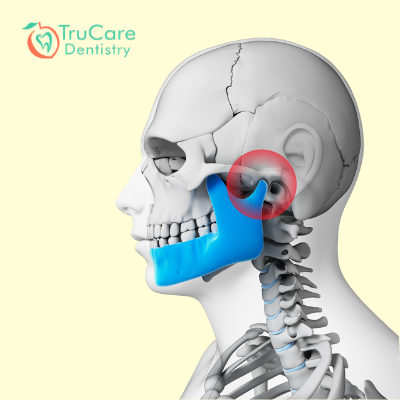
Temporomandibular Joint (TMJ) disorder is discomfort that we experience near the jaw and the ear regions. TMJ is a hinge that connects your jaw with the skull. In fact, TMJ sets into action whenever we speak, eat or even swallow. TMJ disorders are caused due to the problems with jaw muscles or jaw points.
You can realize that you have a TMJ disorder with these following symptoms
- Acute Pain in the regions of ear, face, jaw as well as the neck
- Experiencing Pain while chewing
- Clicking on sound when opening or closing your mouth
- Headache coupled with the ear pain
Surgery is the last option for this disorder. However, most of the times this disorder may disappear without notice. But if the pain persists, there are a few tips and treatments that may help you cure.
Let us first take a look at the tips to overcome this doing by simple exercises
#1 Thumb and Chin Exercise: This is an effective exercise that you can do it for 5 to 10 seconds. Continue doing this for 4 to 5 times.
Use your thumb to push your chin inward. Watch out for the pressure you give. A Mild push is sufficed. Once your chin is pushed in, open your mouth for a period of 5 to 10 seconds.
#2 Index Finger and Chin Exercise: This again is recommended to do it for 4 to 5 times. Open your mouth widely and place your index finger on your chin below your lower lip. Press it with mild pressure. Keep pushing it lightly as you open your mouth. Dentists also observed that TMJ disorder occurs also due to stress. There are two more tips for you to relax and fight TMJ disorder.
#3 Stomach Filled Breathe in and Breathe Out: This is a fabulous exercise that can help you get relaxed instantly. Inhale as much as you can so that you feel the stomach getting bulged. Now, Exhale slowly. Continue this process for 8 to 10 times.
#4 Deep breathing techniques: Any deep breathing technique like Pranayama or Yoga can help you get relaxed as well. Many stretching exercises are recommended for this disorder.
#5 Tongue Up – Jaw Movement: Allow your tongue to touch the top palate of your mouth. While having it there, open and close your mouth. Continue this process for 8 to 10 times.The variation in this exercise is, Keep the tongue up on the roof of your mouth, Move to Open your mouth as wide as you can. You can also move the lower jaw as low as possible and bring it back to the same position.
#6 Jaw Movement – Forward: This requires a thin object like a pen or brush to be kept in between your front teeth. Hold the exterior with your fingers and move your Jaw as forward as you can. You can do this 8 to 10 times a day.
Apart from these exercises, the below-mentioned strategies can also help you.
#7 Cold or Heat Massage: Allow the affected area to be covered with an ice pack or warm packs. Ensure to place it for at least 20 minutes for greater relief. Ensure you do this every hour.
#8 Mouth Guards: Dentists prescribe mouth guards which may help you from Jaw clenching or grinding.
#9 Pain Killers: Yes! It is highly recommended to use Pain Killers like ibuprofen or acetaminophen to fight the pain.
#10 Muscle Relaxers: If TMJ disorder is caused due to muscle spasms, it is also recommended to use muscle relaxants for pain relief.
The above-mentioned methods can help you for sure. However, if the pain is consistent and regularly occurs the doctors may suggest you the below-mentioned treatments too.
- Arthrocentesis: This is a type of acupuncture treatment where the needles are inserted to remove inflammation.
- Pain relieve Injections: These injections are administered near your jaw to relax your muscles. However, the use of Botox is prevented in certain countries but has a really good effect on the relaxation of the muscles.
- Open-Joint Surgery: This is done when all the conservative treatment fails. Additionally, if the TMJ disorder is due to a basic structural imbalance of the jaw. The doctors may not prescribe this unless all the difficulties are understood by the patient. There may be a possibility that your jaw may go unshaped.
- Modified Condylotomy: This surgery is done on the mandible and not on the joint. It has good results, however, it depends on the severity of the disorder.
As we have seen there are many conservative methods to treat this disorder. Ensure to perform the exercises regularly to avoid the pain. More importantly, exercises are the best cure for this whereas the medications can only support you through drug and it may reappear. Choose wise options and get cured.
